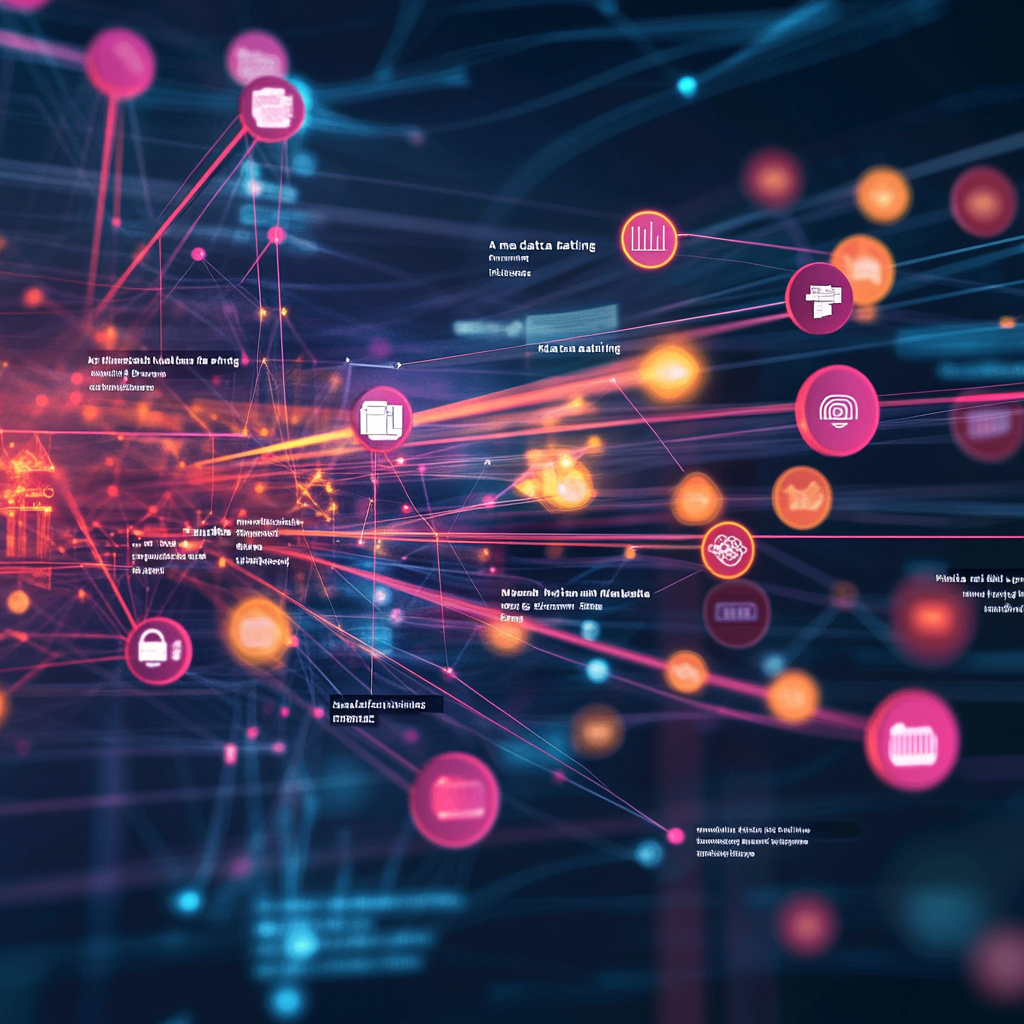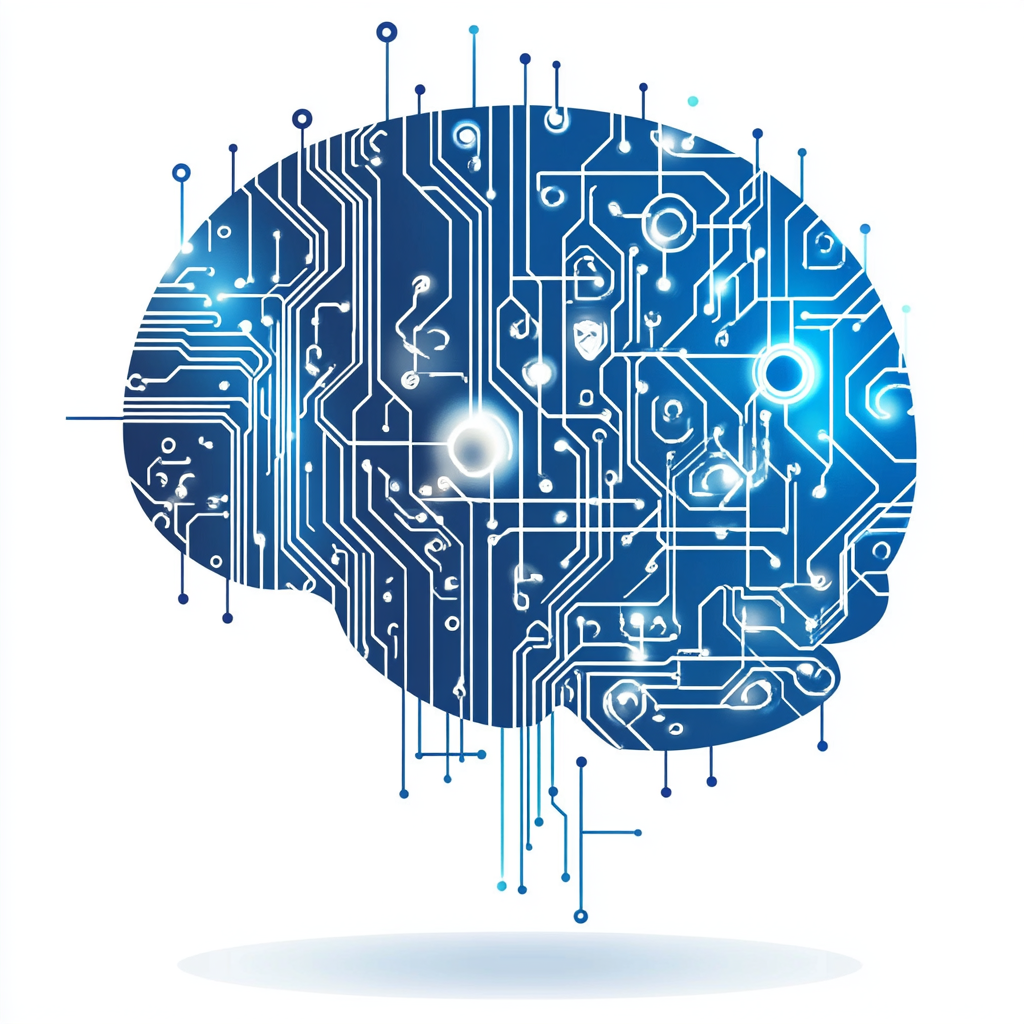Table of Contents
- Intro – Identity Resolution Defined
- Why Identity Resolution Is Important
- Core Concepts of Identity Resolution
- Differences Between Entity & Identity Resolution
- Customer Identity Resolution AI
- Identity Resolution for Fraud Detection & Prevention
- Dangers of DIY Identity Resolution
- Advantages of Pre-Built Identity Resolution
- Taking Identity Resolution to the Next Level
- Senzing Identity Resolution SDK
- The Next Step: How To Get Started
What Is Identity Resolution
& Why Is It Important?
Identity Resolution Defined: Identity resolution is the process of connecting disparate data points to create a single, coherent, and unified representation of an individual. It’s about piecing together a puzzle from scattered fragments to reveal a complete picture of a person’s interactions and behaviors across all touchpoints, platforms, and devices.
Identity Resolution is a specialized, consumer-focused subset of the broader, more foundational discipline of Entity Resolution, which deals with all types of “entities”, including people, organizations, vehicles, locations, products and more.
The Context: Why Identity Resolution Is Important
Large volumes of data scattered across siloed systems. Sound familiar? Most organizations are drowning in disconnected customer data, which makes it impossible to get a 360 view of anything.
All too often, one person is treated as multiple different individuals. Conversely, multiple distinct individuals with similar information can be accidentally treated as the same person. This fragmentation and lack of accuracy not only hinders the ability to deliver a single coherent view of customers, but also creates security issues that fraudsters can exploit.
Identity Resolution provides a solution to this dilemma. It enables organizations to create a single accurate customer view and improve operational efficiency, all while identifying and preventing malicious activities. The following outlines the application and benefits of using a Customer Identity Resolution AI.
Core Concepts:
Identity Resolution Technologies
At the heart of Identity Resolution are several core concepts and technologies that work together to link and consolidate data.
Key Concepts
- Identifiers: These are the data points used to recognize an individual. They range from Personally Identifiable Information (PII) like names and email addresses to pseudonymous data like cookie IDs and device IDs.
- Identity Graph: This is the central database that stores all identifiers linked to a customer, creating a map of their interactions. It merges the complete history of each customer into a single, unified profile.
Different Data Matching Methods
- Deterministic Matching: This high-confidence method links data based on exact matches of known identifiers, such as a shared email address or phone number. It is highly accurate but limited by the availability of exact matches.
- Probabilistic Matching: Also known as “fuzzy matching,” this approach uses statistical algorithms to infer the likelihood that different data points belong to the same person. It analyzes non-PII data like IP addresses, device types, and Browse behavior to make educated guesses, offering broader reach but lower accuracy than deterministic matching
- Real-Time Principle Based Matching: The latest evolution of intelligent data matching abandons the need for thousands of complex, hard-coded rules. Instead, it operates on a set of universal principles—generalized, built-in knowledge about how identifying attributes behave in the real world. This makes the system incredibly flexible, allowing it to work with high accuracy out of the box and add new data sources with unprecedented ease.
Enabling Technologies
- Customer Data Platforms (CDPs): These platforms centralize customer data from various sources to build unified profiles and often include Identity Resolution capabilities.
- Identity Resolution Platforms: These are specialized tools dedicated to connecting consumer identifiers across different channels and devices.
- Artificial Intelligence (AI) and Machine Learning (ML): AI and ML enhance accuracy through advanced pattern recognition, automate the linking of data, and enable real-time resolution. A modern Customer Identity Resolution AI can analyze vast datasets to handle inconsistencies and predict fraudulent behavior.
- Graph Databases: These databases are structured to efficiently store and navigate the complex relationships between identifiers, making them ideal for resolving large identity networks.
What’s The Difference?
Entity vs Identity Resolution
Identity Resolution is a specific subset of a broader data quality and management process called Entity Resolution. While Identity Resolution aims to identify and link records corresponding to people, Entity Resolution applies the same process to any real-world “entity,” which can include people, organizations, locations, accounts, or products.
Identity Resolution in Relation to Entity Resolution
Identity Resolution is a specific subset of Entity Resolution that focuses exclusively on identifying and linking information related to individuals. While the terms are sometimes used interchangeably, Identity Resolution has a narrower focus on individuals, often within marketing, customer relationship management, and personalization.
Entity Resolution is a broader data management process focused on identifying, linking, and merging records that correspond to the same real-world entity across various data sources. An “entity” can be any distinguishable real-world object, including people, organizations, locations, products, or events. The goal is to create a single, unified, and accurate representation of each entity.
Both employ similar underlying techniques for record linkage, data matching, and deduplication, including deterministic and probabilistic matching algorithms, data cleansing, normalization, and the use of identity graphs or entity registries. However, Entity Resolution has broader applications in areas like supply chain management, product information management, and regulatory compliance, while Identity Resolution primarily serves user and customer-centric use cases like marketing, customer service, and personalization. Learn more in-depth about Entity Resolution.
In the context of fraud, while Identity Resolution is crucial for creating a unified view of individuals and detecting individual bad actors, the broader capabilities of Entity Resolution can help uncover more complex, multi-entity fraudulent schemes by linking related entities like businesses, addresses, or IP addresses that are part of a coordinated operation.
The Strategic Imperative:
Identity Resolution & A Unified Customer View
One of the primary benefits of Identity Resolution is the ability to build a comprehensive 360-degree view of customers, users partners, suppliers, and anyone else who interacts with a business or organization. This comprehensive profile is the cornerstone of modern customer relationship management and personalization efforts.
Enhancing Customer Experience and Personalization
By accurately resolving user identities, organizations can gain deep insights into customer behaviors, preferences, and their entire journey. This allows businesses to:
- Deliver Personalized Interactions: Organizations can create customized marketing messages and offers based on an individual’s preferences and past behavior. This prevents disjointed experiences, such as receiving irrelevant or repetitive messages.
- Boost Engagement and Conversion: A high level of personalization significantly boosts customer engagement and conversion rates, helping businesses stand out in a crowded market.
- Build Brand Value: Consistent communication and experiences across various channels build brand value and recognition.
Improving Marketing Effectiveness and Efficiency
A unified customer view empowers marketers to segment and target their audiences with precision, maximizing relevance and driving higher conversion rates. Key benefits include:
- Optimized Ad Spend: Understanding customer behavior across channels allows advertisers to deliver messages to the right people at the right time, optimizing their ad spend.
- Accurate Attribution: It enables the accurate attribution of sales and interactions to the correct marketing channel, providing a clear picture of campaign performance.
- Reduced Waste: By identifying who customers are, businesses can avoid misidentifying them and reduce data overlap and duplication, leading to more efficient spending on campaigns that work.
Driving Operational Efficiency
Beyond marketing, Identity Resolution streamlines processes throughout an organization. It reduces data redundancy by eliminating the need to manage multiple, conflicting records for the same customer. This is particularly crucial during large-scale organizational changes like mergers and acquisitions, where integrating disparate customer databases is a massive undertaking. Accurate data also leads to better business decisions based on reliable customer intelligence and analysis.
A Critical Defense:
Identity Resolution for Fraud Detection & Prevention
Fraudsters often open multiple accounts using slight variations of names, email addresses, and other personal information across different channels. In isolation, each application or transaction might appear legitimate. Without a unified view, financial institutions, e-commerce businesses, and government agencies struggle to detect these coordinated fraudulent activities, leading to severe consequences:
- Increased Financial Losses: Undetected fraudulent transactions and applications result in significant financial losses.
- Security Breaches: Bad actors exploit fragmented data to gain unauthorized access to sensitive information.
- Inefficient Investigations: Investigating disconnected data silos is time-consuming and often yields incomplete results, allowing criminals to evade detection.
- Erosion of Trust: Customers and citizens lose faith in organizations that cannot protect them from fraud or manage their data securely.
How Identity Resolution Uncovers Malicious Activity
Identity Resolution tackles these vulnerabilities by creating a single, persistent view of each individual, allowing organizations to connect seemingly unrelated activities. The focus shifts from simple data consolidation to identifying patterns and anomalies that indicate malicious intent.
This is achieved through several enhanced techniques:
- Data Ingestion from High-Risk Sources: In addition to standard customer data, organizations incorporate information from sources relevant to fraud detection, such as IP address logs, device fingerprinting data, transaction histories, and watchlists.
- Link Analysis: By visualizing connections between data points, analysts can uncover hidden relationships. For example, multiple accounts using different names but sharing the same phone number or device ID can reveal a potential fraud ring.
- Behavioral Analytics Integration: Identity Resolution can be combined with behavioral analytics to establish a baseline of normal user behavior. Any deviation from this baseline, such as a sudden change in transaction volume, can trigger an alert for suspicious activity.
- Real-Time Risk Scoring: By resolving an individual’s identity in real-time during a transaction or login attempt, organizations can assess the associated risk based on historical data and behavioral patterns, preventing fraud before it occurs.
Critical Applications in Combating Fraud
The application of Identity Resolution for fraud prevention spans various sectors:
- Financial Services: Banks use it to detect account takeovers, credit card and loan fraud, and money laundering by linking seemingly unrelated accounts and transactions.
- E-commerce: Online retailers can prevent fraudulent purchases and reduce chargebacks by linking Browse behavior, purchase history, and device information to flag suspicious orders.
- Government Agencies: Public sector agencies use Identity Resolution to prevent individuals from fraudulently claiming benefits under multiple identities, assist law enforcement in tracking criminal networks, and help tax agencies identify tax evasion schemes.
DIY Danger:
Should You DIY In-House Identity Resolution?
The complexity of accurately linking diverse and evolving data sources requires deep expertise in matching algorithms and data structures. A DIY system may lack the flexibility to adapt to new channels and identifiers, demanding constant and costly maintenance. Furthermore, simply identifying users is not enough; the resolved data must be accessible and actionable for business teams, which requires a comprehensive suite of integrated tools.
Attempting an in-house Identity Resolution solution presents significant pitfalls:
- Evolving Complexity: Customer engagement strategies constantly evolve, with new channels, platforms, and identifiers emerging. Initial DIY logic might not be flexible enough to accommodate these changes, requiring constant updates.
- Inherent Complexity: Building a robust Identity Resolution solution requires a deep understanding of data structures, matching algorithms (deterministic and probabilistic), and data quality issues.
- Underestimation of Tooling Needs: Simply identifying unified customer profiles is not enough; the data needs to be accessible and usable by various platforms. This typically requires investments in event streaming, ETL, reverse ETL, data warehousing, and data transformation tools, along with the expertise to connect and maintain them.
- Ongoing Maintenance and Resources: Identity Resolution is not a one-time project; it demands continuous monitoring, testing, debugging, and auditing to ensure accuracy and reliability. Staying compliant with evolving legal, regulatory, and privacy requirements adds another layer of complexity and necessitates dedicated resources.
- Lack of Expertise and Perspective: Data scientists, while skilled, might underestimate the complexity of building a real-time, principle-based Identity Resolution system that is both highly accurate and provides explainable results.
- Significant Budget (more than you’d think): To develop a fast, accurate and reliable Identity Resolution system is notoriously difficult and shockingly expensive. We’ve worked with organizations who have spent millions in development, only to throw in the towel and use our off-the-shelf Identity Resolution SDK (with better results).
A Robust Solution:
Advantages of a Pre-Built Solution for Identity Resolution
After assessing the options, many organizations choose a pre-built product over developing one themselves. Here are some of the key benefits of this approach:
- Future-Proof Adaptability: A well-designed, purchased solution is engineered to handle growing data volumes and will be able to scale efficiently to meet your needs. It will also be adaptable enough to integrate new data feeds and meet future operational demands. By selecting an Entity Resolution solution for current Identity Resolution needs, organizations also allow for potential future resolution of other kinds of entity data, like resolving information around businesses and vehicles, which can also enable more advanced and more accurate representations of resolved identities.
- Quick Implementation: Instead of a long development timeline that could stretch for years, a commercial solution can be implemented and put to use in just a few weeks. This allows you to gain value from your data much faster.
- Greater Precision: A pre-packaged identity resolution platform is backed by specialized teams who have dedicated extensive time to refining their algorithms. This guarantees top-tier performance and dependable results.
- Reduced Overall Costs: The cumulative cost of a ready-to-use solution is nearly always less than what it would take to build and maintain an in-house system. When accounting for the long-term expenses of development, upkeep, and technical support, purchasing is clearly the more economical choice.
- Concentrate on Core Business Goals: By acquiring an identity resolution system, you can redeploy your internal engineering teams to work on projects that directly impact your primary business objectives. You can let the specialists handle the complex work of identity resolution while your team focuses on its strengths.
- Inherent Data Protection: Top-tier identity resolution systems are designed with data security and privacy as a fundamental consideration. This provides assurance that your data is protected and that your organization will remain compliant with all relevant regulations.
A New Hope
How Entity Resolution Provides Better Identity Resolution
Let’s be honest. Standard identity resolution is trying to solve a 1,000-piece puzzle with only 100 pieces. It focuses on just one entity type—the person—and tries to stitch together names, addresses, and phone numbers. It’s a decent start, but in the face of real-world data chaos, it’s not enough.
When data is sparse, conflicting, or ambiguous, these tools are forced to guess. And guessing leads to costly mistakes: missed fraud, frustrated customers, and a fragmented view of reality.
It’s time to take the blindfold off.
Entity Resolution: Seeing the Full Picture
A true entity resolution engine doesn’t just see individuals in isolation; it sees them as part of a dynamic, interconnected network. People are connected to households, businesses, devices, and countless other entities. These relationships are the missing puzzle pieces, and they provide the crucial context needed to resolve identities with astonishing accuracy.
Connecting the Dots Others Can’t See
Imagine you have two records for “Susan Jones.” One has an old address, the other a new one. An identity-only tool throws its hands up. Is it one Susan who moved, or two different people?
Senzing sees what others miss. It instantly spots that both “Susan Jones” records are linked to the same household entity, the same employer entity, and even a shared device entity (that trusty family tablet). The verdict is immediate and obvious: It’s one Susan. No guesswork required.
From Blurry Snapshots to a High-Def 360° View
This ability to see the bigger picture is a game-changer for any organization:
- Unmask Hidden Risk: Go beyond individual profiles to uncover sophisticated fraud rings linked by non-obvious relationships—like a shared address or a burner phone used across multiple sham businesses. These are the connections that are hiding in plain sight, completely invisible to identity-only tools.
- Create Brilliant Customer Experiences: Stop treating your customers like a random collection of data points. By understanding their relationships—to their family, their work, their past purchases—you move from a blurry snapshot to a crystal-clear, 360° view. That’s how you deliver the hyper-personalized, seamless experiences that build lifelong loyalty.
Don’t settle for just a piece of the puzzle. With Senzing Entity Resolution, you get the whole picture, context and all. It’s the difference between knowing a name and truly understanding who someone is.
Senzing SDK
Advantages of Senzing Resolution
There are many advantages to using the Senzing AI for your Identity Resolution needs. We’re the acknowledged world-leader in entity resolution technology, with a long and proven history. Here are a few of the many reasons you might want to consider using our Entity Resolution solution for your Identity Resolution needs:
Faster Time To Value
Senzing offers a purpose-built AI designed specifically for Identity Resolution. This solution, delivered as an Entity Resolution SDK makes human-intelligent decisions on various datasets without requiring pre-training or pre-tuning. Unlike rule-based systems, Senzing employs a principle-based approach, based on expected attribute behaviors like frequency, exclusivity, and stability, to determine if different pieces of data refer to the same real-world entity.
Principle Based AI with Entity-Centric Learning
Senzing’s Entity Resolution AI continuously learns and adapts in real-time without system reloads. It retains the history and attribute variations for each resolved entity, learning nicknames, alternative email addresses, common typographical errors, and even intentionally fabricated information over time. This entity-centric learning leads to higher quality Entity Resolution decisions compared to basic record-to-record matching.
High Performance, Real Time Resolution
Senzing is designed for high-performance, real-time Entity Resolution, processing millions of records daily with sub-second response rates on commodity hardware. Its architecture supports vertical and horizontal scaling in cloud computing infrastructures. Senzing not only identifies when entities are the same but also discovers and manages relationships between them, including households, networks, and fraud rings.
Fully Explainable, Repeatable Results
As a fully explainable system, Senzing provides tools to audit and understand why matching decisions were made, offering clear explanations of how a match was determined or why two records were or were not linked. This ensures trust and confidence in the accuracy of the resolved data. Senzing AI requires minimal upfront data preparation and does not necessitate extensive tuning or training.
Fast, Easy, Pain-Free Integration
Senzing offers an easy-to-download SDK that can be quickly integrated into various projects using Python, Java, .NET, Go, or C++. Docker and REST are also common deployment patterns.
The Next Step:
How To Get Started
Utilizing the Senzing® SDK almost always delivers a faster return on investment and a lower TCO than building identity resolution capabilities yourself. It will also free up your in-house development resources to focus on more important projects, such as those that enhance your core strengths.
Schedule a time to meet with one of our identity resolution experts today. We’ll help you evaluate your specific requirements and determine if Senzing entity resolution is the best solution for your needs. If we don’t think we’re the best option for you, we’ll let you know that too.




